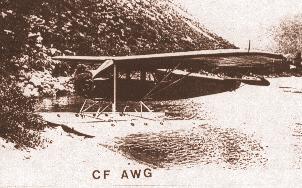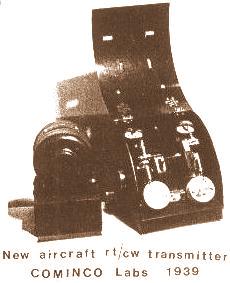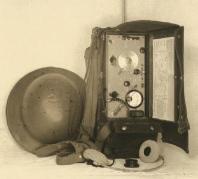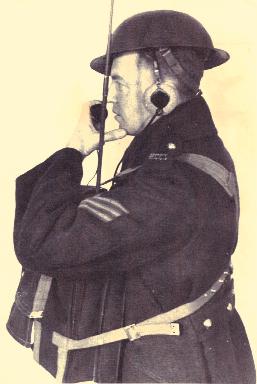|
DONALD
L. HINGS Inventor & Telecommunications Pioneer Walkie Talkie |
|
 The "walkie-talkie" is Don Hings' most well-known invention. The
earliest versions of this device were designed as portable field radios
for the bush pilots of Consolidated Mining and Smelting (now Cominco),
who had to fly their planes between remote sites in the far north of
Canada.
The "walkie-talkie" is Don Hings' most well-known invention. The
earliest versions of this device were designed as portable field radios
for the bush pilots of Consolidated Mining and Smelting (now Cominco),
who had to fly their planes between remote sites in the far north of
Canada.
The first walkie-talkies were pretty much ignored by the world at large until the war broke out in 1939, when they suddenly became a valuable military technology. CM&S loaned Hings to the Department of National Defence and the National Research Council in Ottawa to help redevelop his invention for use in battle.
Other Walkie-TalkiesOther walkie-talkies were used during the course of the war by other nations. The British, Germans, and Americans had their own portable radio designs. Since these various radios used different circuit designs, they were often invented independently of one another, and each can make some kind of claim to being the "first of its kind". There was a large variance in the performance and portability of these various designs, however.Some sources claim that the first walkie-talkie dates back as early as 1933. In fact these early portable radios were neither walkie nor talkie - although mobile, they typically transmitted in code and drew their power from a vehicle. Another claim is that of Al Gross of the United States, who invented his own walkie-talkie in 1938. Without taking anything away from Gross's accomplishment, Hings' CM&S field radios were already in production at that time. The rivalry for the distinction of walkie-talkie inventor never concerned Hings - none of these inventions were particularly revolutionary, in his modest view. He sees them as part of a spectrum of communications technologies that were in development long before, and continued to develop long after the war.
|
|
 The first true walkie-talkie was built by Hings in 1937, but it was
not called a walkie-talkie at the time. In Hings' notes, it was
simply a two-way field radio. They were also called wireless sets, or
"pack sets". The term "walkie-talkie" (sometimes "talkie-walkie") was
coined by journalists reporting on these new inventions during the
war.
The first true walkie-talkie was built by Hings in 1937, but it was
not called a walkie-talkie at the time. In Hings' notes, it was
simply a two-way field radio. They were also called wireless sets, or
"pack sets". The term "walkie-talkie" (sometimes "talkie-walkie") was
coined by journalists reporting on these new inventions during the
war. After a few years of R&D, Hings' had developed his portable radios
into a variety of models for the army. The Model C-58 Pack Set was a
tremendously successful design, both in performance and production,
with tens of thousands of units being built and shipped overseas.
Variants were designed for both European and tropical theatres, along
with vehicle- and tank-mounted versions.
After a few years of R&D, Hings' had developed his portable radios
into a variety of models for the army. The Model C-58 Pack Set was a
tremendously successful design, both in performance and production,
with tens of thousands of units being built and shipped overseas.
Variants were designed for both European and tropical theatres, along
with vehicle- and tank-mounted versions. Among the innovations in the C-58 Walkie-Talkie, were variable
antennas and power supplies for maximum versatility in battle, a voice
scrambler to prevent easedropping, and a special filter that
eliminated battle noises from the transmission, so that voice came
through clear, even amidst roaring engines and gunfire. All in a
lightweight, high performance, durable package without any moving
parts, and extreme simplicity of operation, as the military demanded.
Among the innovations in the C-58 Walkie-Talkie, were variable
antennas and power supplies for maximum versatility in battle, a voice
scrambler to prevent easedropping, and a special filter that
eliminated battle noises from the transmission, so that voice came
through clear, even amidst roaring engines and gunfire. All in a
lightweight, high performance, durable package without any moving
parts, and extreme simplicity of operation, as the military demanded.